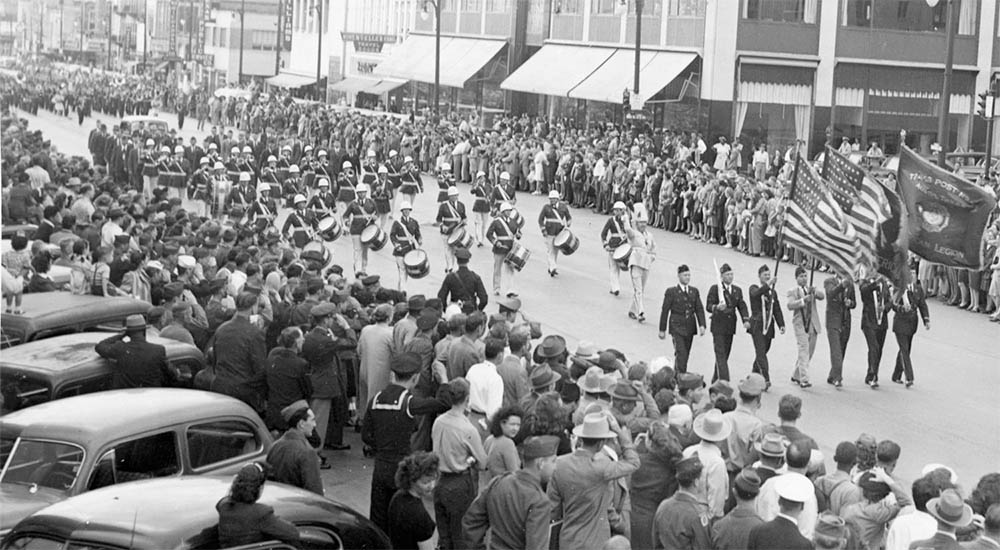On Nov. 11, 1919, the nation celebrated Armistice Day, marking the first anniversary of the end of the First World War. In 1945, Armistice Day commemorations took on new meaning as the Second World War ended. Sixteen million active duty service members transitioned back into civilian life.
Parades and celebrations honoring new and old Veterans alike occurred throughout the country that day. President Truman, a World War One Veteran, recognized the sacrifices so many had made by dedicating the day to peace in his Armistice Day proclamation.
Photo above: Armistice Day parades took on new meaning 75 years ago, in 1945, as the nation’s Veteran population increased by 16 million that year. Peace and rapid demobilization brought new meaning and challenges for what was then known as the Veterans Administration.

Dr. Paul Magnusen, General Omar Bradley and General Paul Hawley, the architects of the Department of Medicine and Surgery, 1946.
The end of the Second World War increased the nation’s Veteran population more than any other time in our nation’s history that year. The care of those returning Veterans fell upon newly appointed VA Administrator General Omar Bradley.
Chosen by his fellow Missourian President Truman to transform the Administration, Bradley was only three months into the job in November 1945. He understood the gravity of the situation and sought to rapidly modernize VA to meet the growing demand.
Modernizing medicine for Veterans
Providing medical care for the millions of returning GIs was Bradley’s most pressing concern. He enlisted his chief surgeon from the European Theater, Major General Paul R. Hawley, and together they initiated several major changes. Among these was altering the way doctors and nurses were hired. Bradley removed the hiring practices from the limited and outdated confines of the Civil Service System.
Along with Dr. Paul Magnusen, they also sought affiliations with the nation’s major medical schools. They transformed the nature of VA medical care and placed an increased focus on teaching and research. Lastly, they shifted the locations of new VA hospitals away from rural areas to larger cities. They could provide care to a larger number of Veterans and be closer to the medical schools with which they sought partnerships.
Although his tenure as administrator was brief, Bradley looked back at his time at VA, noting that “Nothing I have done in my life gave me more satisfaction than the knowledge that I had done my utmost to ease the Veterans way when they came home.”
In 1954, after the Korean War, President Eisenhower officially changed the name of the holiday from Armistice Day to Veterans Day. Nov. 11 became an annual day to honor and recognize the service and sacrifice of all Veterans – living and deceased – of all wars.
Katie Delacenserie is a VA historian. This blog is part of the VA History Office (VAHO) Initiative.
Topics in this story
More Stories
Making healthy choices about what you eat and drink is a powerful way to care for yourself. You need the right fuel to feel well and have the energy to do what matters most to you.
Blind TeleRehabilitation offers blind and visual impairment rehabilitation assessment, training, specialized technology and support groups.
Pacific Islands VA has opened a new urgent care clinic inside the Daniel K. Akaka VA Clinic.






Happy Veterans Day Everyone!